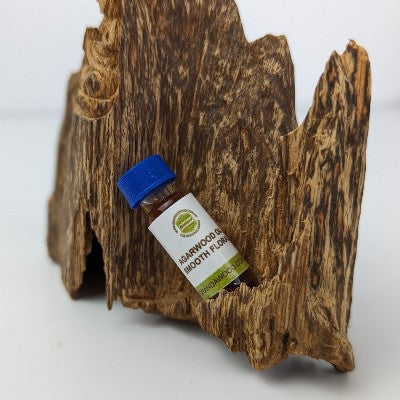Menu
-
-
F.A.Q
- How to identify genuine agarwood chip, natural or cultivated
- How to identify oil injection / absorption fake agarwood beads
- How to know if there are more than one oil in your oil
- How to make your wood bracelet or mala darker
- How to tell if an Agarwood bead sinks WITHOUT sinking it under water?
- How does back flow incense work and how do you burn it?
- Where to start if you don't know what agarwood is ?
- Why are you losing money if you buy seeds and plants?
- Which agarwood incense should I choose?
- Frequently Asked Questions
- Agarwood Related Articles
- Shipping
-
SHOP - Agarwood
-
SHOP - Other Fragrant Wood
-
SHOP - Incense Holder and Burner
-
- FREE Oud Oil guide
- Testimonials
- "Why did you buy this?"
- Contact us
- About Us
- +61430284329
- Login
-
English


Why do Agarwood chips smell different than Agarwood oils?
August 06, 2023 5 min read
Last week, I got a message from a customer. The good news is she like our Agarwood chip; the bad news is that she wants a refund for her oud oil order.

This is not the first time, so I decide to explain why the chips and the oils smell completely different.
Let’s start with something simple, lime, or in this case, Kaffir lime.

In my garden, I have an 8-year-old Kaffir lime tree. When in seasons, the tree is full of limes. My family and I cannot eat them all, leaving them to rot will be a waste. Their fresh, vibrant smell makes many people happy. So I want to preserve this lime zest aroma by simply tincturing its rind in alcohol.
After 3 hours in alcohol, there are almost no difference in smell.

But in 24 hours, the fresh vibrant note disappears. It is hard to describe, but I smell a different green note that is not in the rind. This note is a bit “deeper”.
Ready for this? After 3 months, there are dramatic changes in colour.

My point is there will be a change of smell of the natural product depending on what you do to it.
Van Toller, Steve, and George H. Dodd mentioned in the book Perfumery: The Psychology and Biology of Fragrance that the oils get from fresh flowers can smell different from the oils that come from flowers that have been cut for a while. Steve and George used the example of gardenias to explain this concept. They stated that when a gardenia is still intact on the plant, it produces a unique chemical known as methyl benzoate, which contributes to its characteristic fragrance. However, the moment the flower is severed, this chemical rapidly transitions into another compound known as ethyl benzoate. Interestingly, new fragrant chemicals, such as limonene, start to emerge in the oil, despite their absence when the flower was attached to the plant.
The authors pointed out that these findings raise questions about the 'naturalness' of the oils commonly used in aromatherapy. The traditional extraction methods for these oils, which involve expressing or utilizing liquid carbon dioxide, typically involve the use of plant parts that have been detached. For certain oils like patchouli, they mentioned that the plant material is intentionally left to age for a while to achieve the desired fragrance of the oil.
Steve and George suggested that there could be potential methods to halt these chemical changes, such as inhibiting the responsible enzymes or resorting to the use of lab-grown plant cells. However, until such techniques are accessible, they concluded that we must acknowledge that the oils currently used in perfumery and aromatherapy have been altered in some way from their original, natural state.
Similar to the case of Kaffir Lime, the differences between the smell of agarwood chips and agarwood essential oil are due to several reasons, such as the extraction process, the different volatile compounds involved, and the changes they undergo during extraction and aging.
This difference in scent comes down to the way the scent is released and how the chemical compounds in the agarwood respond to different processes.
When you burn agarwood chips as incense, the heat changes the way the compounds behave, creating a unique set of aromas that can be quite different from the oil. In the research discussed, they found that burning the Agarwood creates higher molecular weight terpenoids, different from what you would find in the oil, because of the high temperature involved in burning.
Additionally, incense burning also results in the formation of aldehydes and ketones, such as acetaldehyde and formaldehyde, which do not exist in agarwood oil. This happens due to the combustion process, further adding to the difference in scent.
Moreover, the process of extracting the oil involves a lower temperature compared to burning the chips, which means different compounds are extracted and contribute to the aroma of the oil.
Extraction Process:
- Agarwood essential oil is typically produced by water and steam distillation, a process that uses heat and pressure to extract volatile aromatic compounds from the agarwood chips. This process can cause some changes in the composition and concentration of these compounds, resulting in a different smell compared to raw agarwood chips.
- That is why you will find CO2 extracted oil has a closer aroma to wood chips because usually CO2 extracted method uses lower temperatures to extract the oil from the chips.
In addition, the preparation will also alter the aroma.
Wood chips are pulverised into powder and soak under water. Depending on how long this powder is soaked, fungi and microorganism will develop. They will feed in the wood which change the wood properties and adds favour to the final products.
Wood chips are dry.

Pulverised wood chips are dry.

Source: self-taken
Essential oils are distilled from "wet" or "soaked" wood chips.

Variation in Compound Concentration:
Agarwood chips contain a complex mixture of natural compounds that contribute to their unique, rich aroma. However, the water distillation process only "release" or "create" some of the aromatic compounds but not all. Instead, it tends to extract the most volatile and heat-stable ones. During this process, new compounds are created because which may lead to a difference in the scent profile between the chips and the oil.
In the article of Identification of Agarwood (Aquilaria malaccensis) Chips Incense Smoke and Headspace Volatile Compounds by GC-MS.EI.Q.TOF, SPME by Ahmaed, D. T., Masaad, A. M., & Tajuddin, S. N. (2023), the researchers mentioned some compounds detected in the oil were not found in the smoke due to the lower extraction temperature of the solid phase microextraction technique.
The impact of heat
The heat used during steam distillation can cause some of the aromatic compounds in agarwood to degrade or react with each other to form new compounds. This can alter the aroma of the oil compared to raw agarwood chips. Please also note that when you heat Agarwood chips, the aroma is noticeable compared to the room temperature. The heat brings up many volatile compounds.
Different temperature releases different aromatic compounds. That is why you smell the differences the four below
- submerging Agarwood chips under hot water, then bring the chips up and you will smell pleasant aromatic woody aroma. But this experience will differ if the temperature increase or decrease.
- heating Agarwood chips (between 50 to 350 degree Celcius).
- essential oil is distilled with a temperature between 60 to 100 degree Celcius.
- CO2 Supercritical fluid extraction (around 40 degree Celcius).
Presence of Other Components in the Oil:
Co2 extracted Agarwood oil might also contain trace amounts of non-volatile components such as waxes, resins, or plant sterols. These non-volatile substances can modify the scent of the essential oil, making it different from the scent of raw agarwood chips.
Aging Process:
Much like fine wines, most wood essential oils can change and often improve over time due to oxidation and other chemical processes. This aging process can add depth and complexity to the scent of agarwood oil, making it different from the smell of fresh agarwood chips.
Most wood essential oils will improve with age.
Climate, Soil, and Landscape
Just as the soil and climate conditions can affect the taste of tea, environmental conditions can also influence the scent of agarwood. Different species of Aquilaria trees growing in different geographical locations and under different conditions can produce agarwood chips with different scent profiles.
Leave a comment
Comments will be approved before showing up.
Also in News

What is Tasbih? The Deep Meaning of Subhan Allah and the Role of Prayer Beads
November 09, 2025 4 min read
